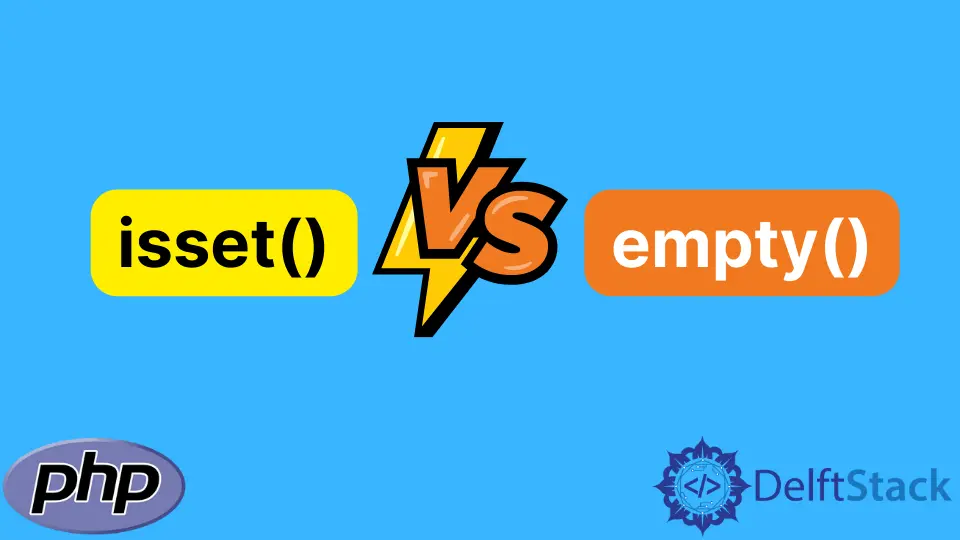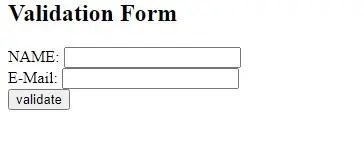PHP 中的 isset() 与 empty() 函数
John Wachira
2024年2月15日
-
使用
isset()函数检查 PHP 中是否设置了变量 -
在 PHP 中使用
empty()函数检查变量是否为空 -
在 PHP 中使用
isset()和empty()函数创建验证表单 -
PHP 中
isset()和empty()函数的区别

本文将介绍 PHP isset() 和 empty() 函数。我们将介绍如何使用这些函数来执行以下操作。
- 检查变量是否被声明和设置。
- 检查变量是否不为空或
null。 - 创建一个 PHP 验证表单。
让我们直接跳进去。
使用 isset() 函数检查 PHP 中是否设置了变量
isset() 函数检查是否设置了变量。当变量被声明并且不为空时,该函数返回 true。
在下面的示例代码中,我们将使用 isset() 函数来检查是否设置了两个变量 $x 和 $y。
这是我们变量的值,$x = 0 和 $y = null。
例子:
<?php
$x = 0;
//Check if our variable is set and not null
if (isset($x)) {
echo "The variable 'x' is set and not null.<br>";
}else{
echo "The variable 'x' either null or not set.<br>";
}
$y = null;
//Check if our variable is set and not null
if (isset($y)) {
echo "The variable 'y' is set and not null.<br>";
}else{
echo "The variable 'y' is either null or not set.<br>";
}
?>
输出:
The variable 'x' is set and not null.
The variable 'y' is either null or not set.
正如预期的那样,$x 不为空,而 $y 已设置但为空。这取决于你希望如何回显结果。
你可以将函数与多个变量一起使用。但是,它仅在设置所有变量时才返回 true。
在 PHP 中使用 empty() 函数检查变量是否为空
empty() 函数检查变量是否已设置且不为空。
让我们看一个示例代码。
<?php
$x = 0;
//Check if our variable is empty
if (empty($x)) {
echo "The variable 'x' is empty.<br>";
}else{
echo "The variable 'x' is not empty.<br>";
}
$y = null;
//Check if our variable is empty
if (empty($y)) {
echo "The variable 'y' is empty.<br>";
}else{
echo "The variable 'y' is not empty.<br>";
}
?>
输出:
The variable 'x' is empty.
The variable 'y' is empty.
empty() 函数将以下内容视为空。
00,0NullFalse""
在 PHP 中使用 isset() 和 empty() 函数创建验证表单
我们将在下面的示例代码中的根目录中创建一个基本的 HTML 表单。我们将创建一个索引文件并将其保存在根目录的文件夹中。我们的索引文件会给用户一个警告。
例子:
<!DOCTYPE html>
<head>
<meta http-equiv="Content-Type" content="text/html; charset=UTF-8" />
<title>Delftstack Tutorials</title>
</head>
<body>
<h2>Validation Form </h2>
<form action="index/index.php" method="get">// The form index.php is stored in the folder index
NAME: <input type="text" name="name" />
<br/>
E-Mail: <input type="text" name="email" />
<br/>
<input type="submit" value="validate" >
</form>
</body>
</html>
输出:

例子:
<?php
if (isset($_GET['name']) AND isset($_GET['email']))
{
$name=$_GET['name'];
$email=$_GET['email'];
}
else
{
die("Acces this file from the HTML page");
}
if(empty($name))
{
die("Enter a name");
}
else
{
if (is_numeric($name))
{
die("Name Must contain Alphabet Values");
}
else
{
echo "Name: $name <br /> Email: $email";
}
}
?>
形成我们的表单,让我们尝试验证以下内容。
Joycelyn Lee,joycelynlee@delftstack.com12567,1234@gmail.com
输出 1:

输出 2:

PHP 中 isset() 和 empty() 函数的区别
isset()函数检查变量是否已设置,而empty()函数检查变量是否已设置且不为空。isset()函数将0视为变量,而empty()函数将0视为空。
作者: John Wachira
John is a Git and PowerShell geek. He uses his expertise in the version control system to help businesses manage their source code. According to him, Shell scripting is the number one choice for automating the management of systems.
LinkedIn